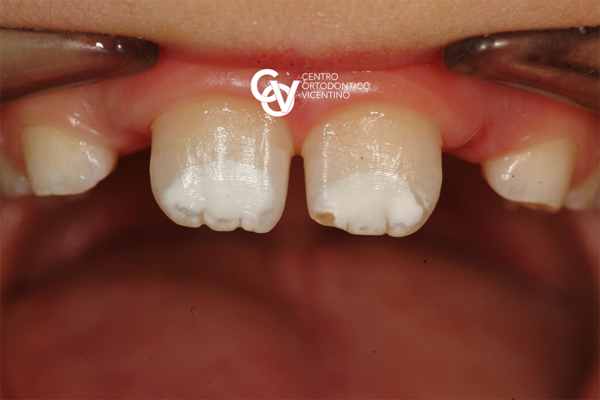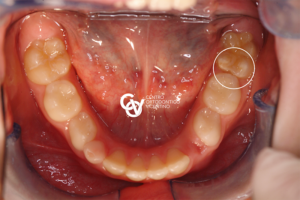
MIH, plaster teeth or enamel hypomineralization? We mean the same thing. Let’s see what it is!
This pathology, increasingly widespread in children, indicates the presence of hypomineralization in the enamel of incisors and molars (Molar Incisor Hypomineralization). The MIH is a quality defect of the enamel which, in most severe cases, leads to crumbling teeth.
Its origin is due to the alteration of the enamel calcification which, if it occurs within 4 months (age in which it usually forms), can determine permanent defects because hard tissues of the tooth are not capable of regenerating.
Its causes are still not clear. Assumptions go from medical complications in the prenatal stage or during birth, to systemic pathologies in pediatric age, vitamin deficiencies, use of antibiotics, absorption of substances (such as Bisphenol A – BPA) by the child through pacifier, baby bottles, early childhood games.
There are different degrees of severity of enamel hypomineralization:
- milder MIH symptoms such as whitish stains which alter the enamel aesthetically but not mechanically
- moderate symptoms which present brownish stains and loss of tooth substance
- severe symptoms in which the evident loss of enamel causes the exposure of the underlying dentin, thus considerably increasing tooth sensitivity.


What are MIH symptoms?
Main symptom is the more or less marked hypersensitivity to hot and cold foods, which can make restoration treatments and hygiene operations more difficult. Also the less resistance to enamel fractures, and aesthetic problems on the front teeth, are common manifestations.
So, what is the right therapy for MIH?
The pediatric dentist will change approach based on the hypomineralization degree of severity.
- In case of mild MHI, he will try to make the enamel sterile with ozone cycles and to remineralize it in the affected areas by applying, at least 3 times a year, professional varnishes with release of fluorine and calcium and phosphate ions.
In addition to this, you can do a daily domestic application of a lotion or mousse containing amorphous calcium phosphate – Acp.
Frequent check-ups will evaluate the success of the treatments.
In some cases, especially when central incisors are affected, you can also take into consideration resin infiltration. - Cases of moderate MHI consider the combination of remineralizing treatments and preservative restoration of the hypomineralized enamel section, which is sometimes preventively removed until it is possible to reach the section of healthy enamel on which the restoration material is anchored.
- Cases of severe MHI can also present caries processes which must be treated necessarily before removing the altered hypomineralized enamel section and then proceed with a preservative restoration.
What do we suggest?
When we visit patients affected by hypomineralization in our dental office, we plan a protocol which starts with prevention and continues with recovery treatments and long-term maintenance.
We therefore plan frequent check-ups, professional hygiene sessions, a remineralization program combined with a meticulous domestic hygiene with the use of a calcium and phosphate mousse.
In an early intercepted patient, it is possible to manage and contain the phenomenon with a good degree of success.
We therefore always suggest periodic check-ups with your trusted dentist.
Do you have any doubt? Call us and we will be happy to help you and talk about the best treatment hypothesis with you.
